How SaaS B2B Companies Can Win at Customer Retention
 I went to my favourite store in town and bought some stuff on my list. However, I discovered I had mistaken a brand for the other one during checkout after payment. I asked the store attendant to help me change it for the other, but he refused.
"No, we don't do that here!" he replied.
"Really, but why?" I asked curiously.
"You are not allowed to change anything once you've paid for it,'' he explained.
The guy was dead serious that I wouldn't be allowed to change anything because I had paid. I mean, I wasn't asking for a refund, just to change something for the other—even though it has the same price. Yet, the store guy declined me. Despite my vexation and all, none of the store officials came to my aid. It was that day that I decided I would never buy anything from the store again.<
For context, the store is one of the best in town because of their variety of products. But poor customer service (bad experience) means I will be shopping with their competitors from now on.
I went to my favourite store in town and bought some stuff on my list. However, I discovered I had mistaken a brand for the other one during checkout after payment. I asked the store attendant to help me change it for the other, but he refused.
"No, we don't do that here!" he replied.
"Really, but why?" I asked curiously.
"You are not allowed to change anything once you've paid for it,'' he explained.
The guy was dead serious that I wouldn't be allowed to change anything because I had paid. I mean, I wasn't asking for a refund, just to change something for the other—even though it has the same price. Yet, the store guy declined me. Despite my vexation and all, none of the store officials came to my aid. It was that day that I decided I would never buy anything from the store again.<
For context, the store is one of the best in town because of their variety of products. But poor customer service (bad experience) means I will be shopping with their competitors from now on.
Customer Experience is Key to Retention
Like this store, many SaaS companies have lost their customers to competitors because of poor customer service which results in upward churn rates. In fact, 50% of customers churn due to one bad experience according to ZenDesk's Trends Report. Being a SaaS company doesn't license you to treat your customer like sh!t. "Oh, we have a great product with outstanding features," I hear you say. Well, there are 1001 great products with great features out there. What often distinguishes your business from the rest is your customers’ experiences with your brand. In today's world people want the best experience possible with companies, and will even go out of their way to find a company that provides it. Even if your product is cheaper with more robust features for them to use, they might not come to you if your experience is not what they are looking for. This is why customer retention strategies are important.Create Your Free Marketing Calendar Now
Before you learn all about how to retain customers like top companies in the industry, make sure you claim your forever-free marketing calendar to help plan every piece of your marketing operations going forward.- How Does Your Company Deal with Customer Retention?
- 6 Ways SaaS Companies Retain Customers Through Customer Experience
- 1. Offer a Free Trial and Demo With No Strings Attached to Let Customers Try Before They Buy
- 2. Get to Know Your Customers and Their Needs to Better Serve Their Journey with Your Product
- 3. Create an Easy-to-Use Product or Service That is User-Friendly with a Delightful Experience Before and After Onboarding
- 4. Have Customer Service Representatives Available for any Questions or Concerns 24/7
- 5. Provide Personalized Services (Automation) to Each Customer
- 6. Send Out Email Campaigns or Newsletters That Promote New Features, Products, Promotions, or Updates to Keep Customers Engaged
How Does Your Company Deal with Customer Retention?
Do you agree with the 44% of companies that believe and focus more on acquisition than retention? Or are you pretending your company is doing great despite your increasing churn rate? Quickly, here are a few things that will interest you. Invesp found out that:- It is five times more expensive to get a new customer than it is to keep one.
- A 5% increase in customer retention can increase your company's profit between 25-90%.
- The conversion rate for selling to an existing customer is 60-70%. It is only 5-20% for someone new.
6 Ways SaaS Companies Retain Customers Through Customer Experience
SaaS companies are in the business of providing solutions. It's important that they do so, but it doesn't stop there. These days, customers expect more than just a product or service. They want a memorable experience any time they come in contact with your business. Luckily, we have compiled some tips on how you can create long-term retention rates by following these 7 easy steps:1. Offer a Free Trial and Demo With No Strings Attached to Let Customers Try Before They Buy
SaaS companies can offer a free trial with no strings attached to let customers try before they buy. Who doesn't love to have a free trial? Of course, we all do. What we dislike, however, is free trials with strings attached. It is also a great way for SaaS providers who are unsure of what solution their customer truly needs, as it will allow them the opportunity to test all features and see which one works best for them. Dropbox and Salesforce use the free trial to drive sales and grow their customer market base. During the free trial phase you want to be as helpful as possible to your potential customer. This is why some of the biggest SaaS companies like Salesforce offer more than just a free trial. They also provide the following to create the best experience for their customer: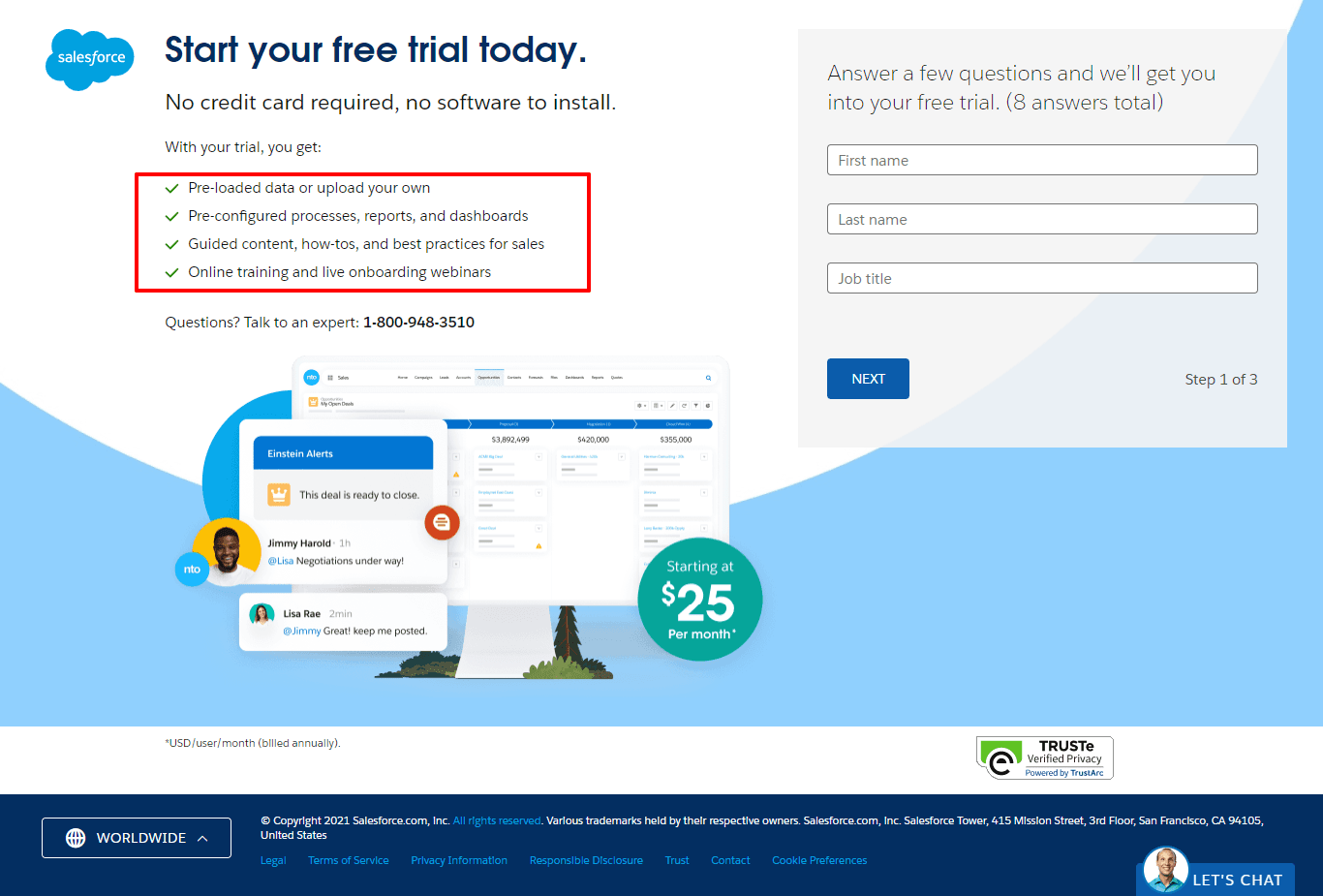 Guided content and how-to articles. Plus, the best industry training that their customers can put into practice.
Salesforce also offers their customers free trials with online training. And they provide live webinars during the trials process.
With features like this, your customer gets an opportunity to try before they make any buying decisions.
Free trials often are part of SaaS companies' marketing strategies. It helps build trust with their customers by making them feel like they receive more value than they paid for.
Now most businesses are not sure how long their free trial period should be, and there is no one size fits all period for this.
Corey Haines, the former head of Growth at Baremetrics, said, "The perfect trial length is just long enough for someone to have adequate time to get set up, experience the product, and record real usage. But still short enough that they feel pressure to use it while they have it and not put it off."
Little wonder trial duration varies across your favorite SaaS product and service.
For instance, in the SEO space, Moz offers free 30-day free trials for its Pro feature. Longtail Pro is another excellent SEO tool that provides a 7-day free trial. Ahrefs offers a paid version of a free trial for 7 days.
Guided content and how-to articles. Plus, the best industry training that their customers can put into practice.
Salesforce also offers their customers free trials with online training. And they provide live webinars during the trials process.
With features like this, your customer gets an opportunity to try before they make any buying decisions.
Free trials often are part of SaaS companies' marketing strategies. It helps build trust with their customers by making them feel like they receive more value than they paid for.
Now most businesses are not sure how long their free trial period should be, and there is no one size fits all period for this.
Corey Haines, the former head of Growth at Baremetrics, said, "The perfect trial length is just long enough for someone to have adequate time to get set up, experience the product, and record real usage. But still short enough that they feel pressure to use it while they have it and not put it off."
Little wonder trial duration varies across your favorite SaaS product and service.
For instance, in the SEO space, Moz offers free 30-day free trials for its Pro feature. Longtail Pro is another excellent SEO tool that provides a 7-day free trial. Ahrefs offers a paid version of a free trial for 7 days.
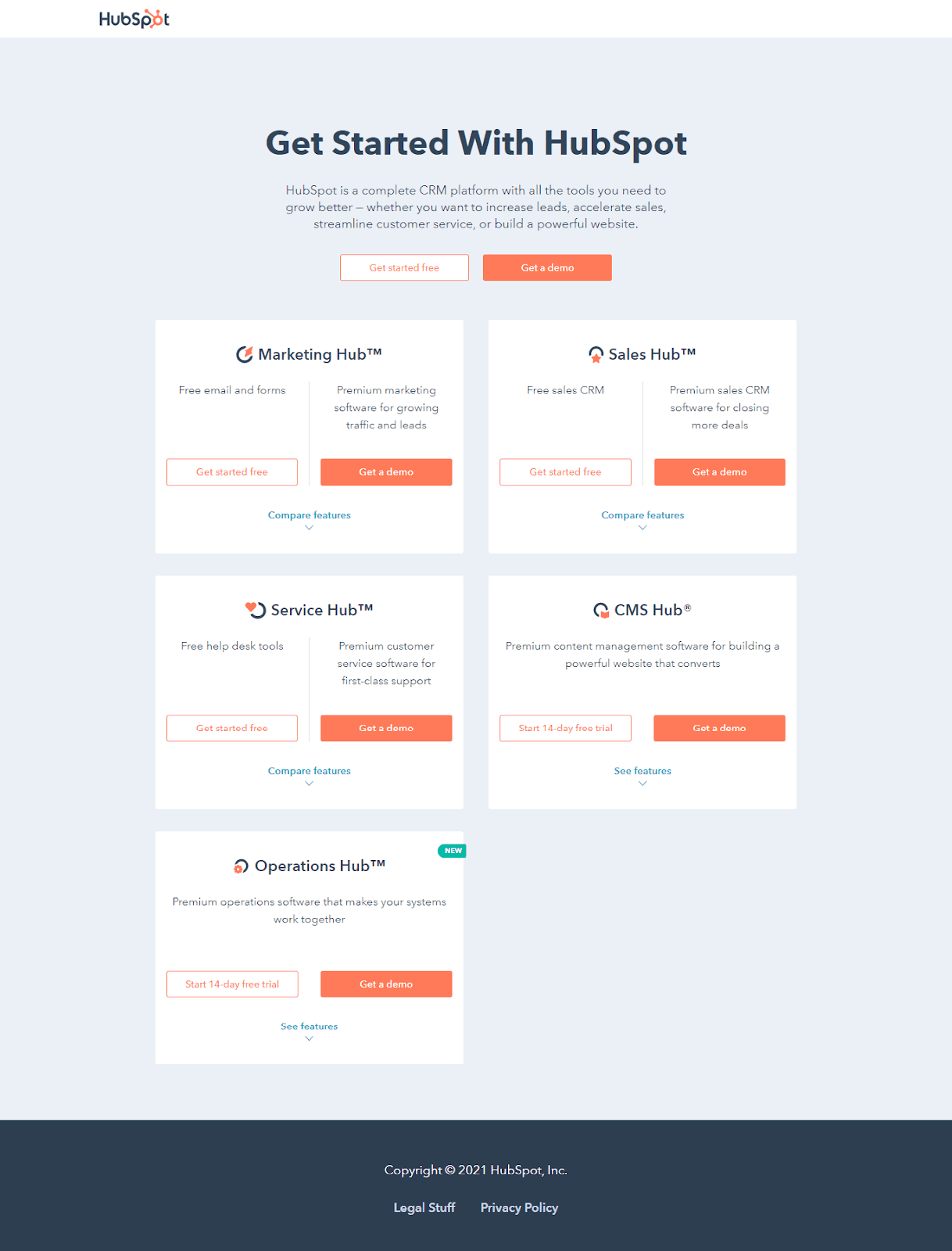
Here Are Some Benefits for SaaS Companies Offering Free Trials:
- Show potential buyers you can meet their needs - your potential customer will tell whether your product or service is what they need. This way, you weed out those that aren't your potential customers. And you can rest assured that those who sign up after a free trial are the real deal.
- It encourages sign-ups - SaaS businesses can generate qualified leads through the sign-ups encouraged by free trials. When your prospective customer comes to check out your product or service and opt-in to get free trials, you can build your email list.
- SaaS companies like Square, Dropbox, and Salesforce use the free trial to drive sales and grow their customer market base. According to a Twitter thread by Jeremy Moser, Square will do $19 billion in revenue this year. And guess what? One of their leading growth strategies is customer retention, not just acquisition.
Square will do $19 billion in revenue this year.
Their marketing strategies have built a worldwide brand. Here are 7 marketing tips you can steal from Square: — Jeremy Moser (@jmoserr) August 19, 2021
- As a SaaS company, you should practice free trials: It helps your prospects have clarity about your product. Confused minds don't buy, they bounce, and that leaves your money in their hands or your competitor's pocket.
What if Free Trial is Unfit for Our Business?
There are exceptions to using a free trial, as it does not always work for some SaaS businesses. In fact, 38% of SaaS businesses do not offer a free trial or freemium option for their product or service. They say it does more harm than good. Some even claim it to be unfit for their business model. It goes without saying that there are various ways to offer a free trial for your product and service, as listed below. There are: Freemium, Paid Trial, Money-back guarantee, and Free trial: You need to understand to choose the one that suits your business model.2. Get to Know Your Customers and Their Needs to Better Serve Their Journey with Your Product
What do people want from a business? The answer varies depending on who you ask, but we often hear some general responses: people want the best deal, and they want to be treated with respect. Many businesses fail to note these requests. Hence, they fail miserably at satisfying them. Businesses need to know what their customers need or do not need to succeed in the long run. Rohit Srivastav, the head of Growth at Insent (a ZoomInfo company), said, "Enterprise SaaS cannot live without a white-glove onboarding today. Customer experience and authentic relationships across the lifetime is a moat that is incredibly difficult to build and hence skipped at the early stages but should not. Enterprise customers let go of a sizable switching cost hurdle when they come over. Treating them with attention and authenticity is beyond all retention tactics you can implement." I am sure you will agree with Rohit on this one. Today, you can literally list businesses that offer a white-glove onboarding process, great customer experience and have authentic relationships with their customers at your fingertips. There aren't many of them. What Rohit is saying: Enterprise SaaS businesses should try and start from the early stages of their customers’ journeys to implement this practice. Although it's daunting, the rewards are enormous. If you want to improve your customer retention and happiness index, treat them with attention and authenticity. If you want to make more money, then you must get to know your customers. You will not do this by guessing what they need or want; instead, ask them and find out for yourself. It begins with you knowing who your customers are.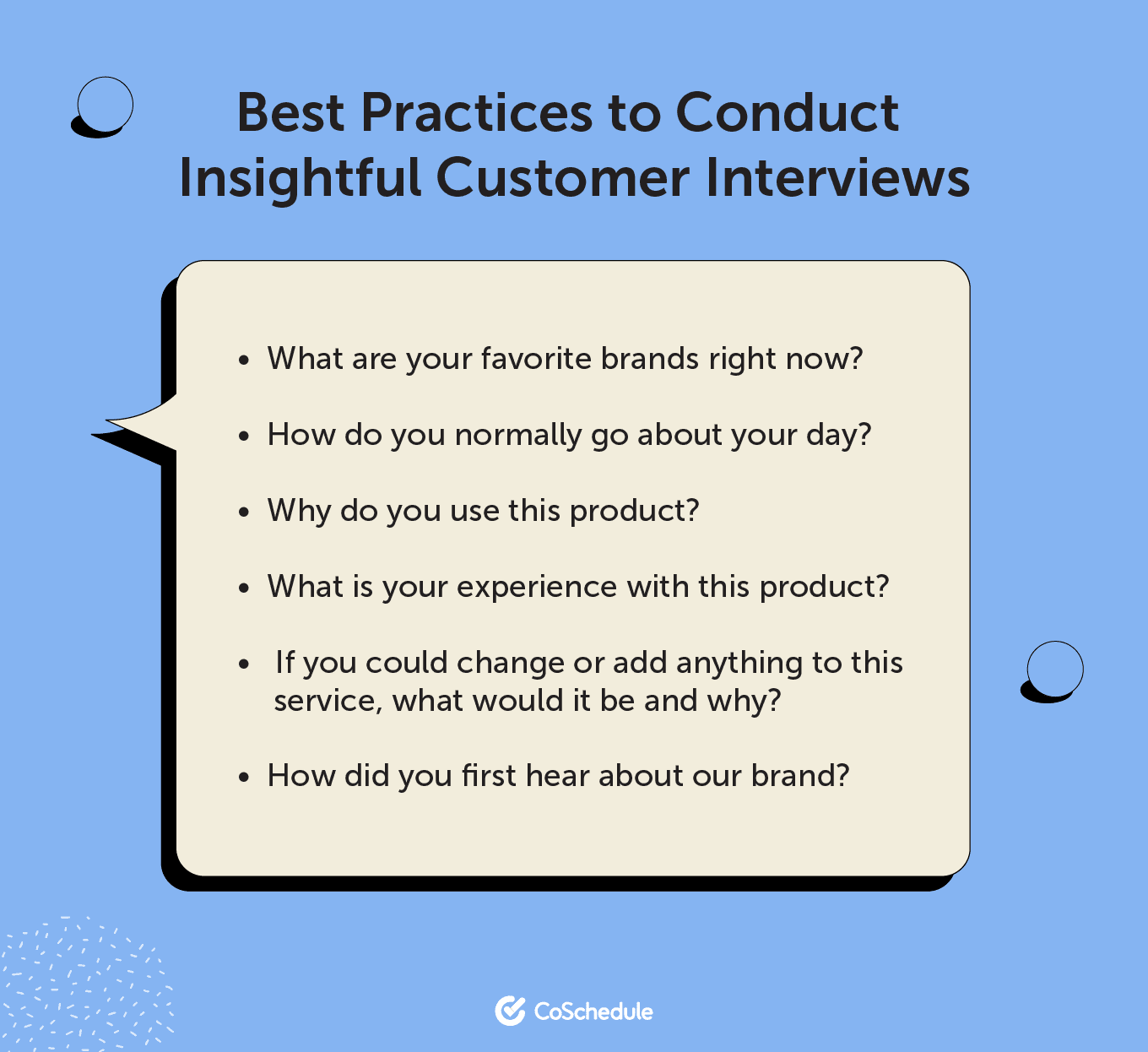 After you've figured out who your customers are, then it's time to find out what they need. You can do this by finding their pain points and engaging with them regularly without being too pushy or aggressive about the sale.
How to get started? Create a list of questions that will gather the necessary customer feedback. This could mean asking them what they love, what frustrates them, or any other information you want to know. Of course, be sure not to ask too many questions at once. If possible, schedule a meeting with your team to brainstorm how to improve your customer service or get better at reaching out.
After you've figured out who your customers are, then it's time to find out what they need. You can do this by finding their pain points and engaging with them regularly without being too pushy or aggressive about the sale.
How to get started? Create a list of questions that will gather the necessary customer feedback. This could mean asking them what they love, what frustrates them, or any other information you want to know. Of course, be sure not to ask too many questions at once. If possible, schedule a meeting with your team to brainstorm how to improve your customer service or get better at reaching out.
What Are Some of the Most Effective Ways to Better Serve Customers?
Answer: Asking your customers what they think about your product and going through a feedback loop with them is essential to success. It will shock you to know that most SaaS companies don't give a hoot. Customer service matters — it's not just for when things go wrong. It is essential to understand your target audience before jumping into any marketing strategies. Knowing your customers and their needs can help you better serve them. One surefire way to get this one is: Make sure that you keep in touch with your customers. Don't just wait for them to contact you! Offer incentives such as free shipping, a coupon, or some kind of reward if they fill out surveys and give feedback on your product or service. Referral programs are another one of the simple and effective ways you can keep your customers engaged with your brand. A great example of this is Dropbox's referral program. It was so powerful that Dropbox doubled their subscribers every three months. Dropbox used it to grow their company by close to 4000%.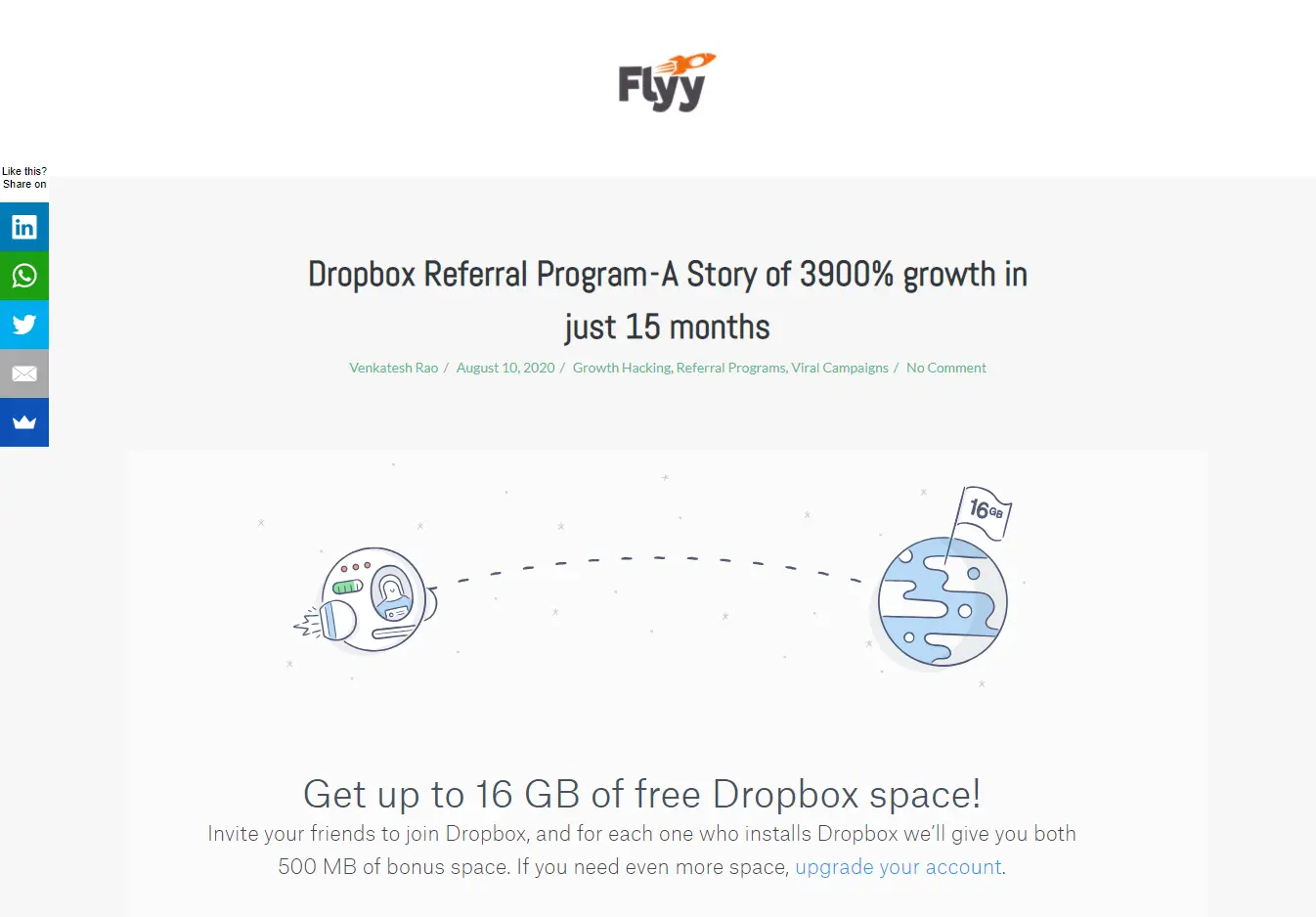
3. Create an Easy-to-Use Product or Service That is User-Friendly with a Delightful Experience Before and After Onboarding
Your audience is not only after whether your product or service solves their problems. Others can give them almost the same solution. However, they care about how your solution will help save time, money, and effort. Top SaaS companies understand this and focus on providing solutions that help their customers solve their pain points and make them delighted customers. This starts with the onboarding process. Make sure you are there for your potential customer right from the beginning of their journey. Your onboarding process must not be tedious. It has to be frictionless and personalized. Users should only see the right, necessary information. Your messaging should be clear so there's no confusion about how to use your product. Don’t have an effective onboarding process yet? Well, Val Geisler's teardown on the email onboarding process will come in handy. Baremetrics uses two forms of the onboarding process to make the journey easy and seamless for their customers. These two are:- A scheduled educational email
- An Action Trigger email
A Delightful Experience. How So?
When you provide a delightful experience for your customer, they help you spread your product or service after. But don’t take my word for it... As Dharmesh Shah, Founder and CTO of HubSpot disclosed in one of his videos, "We asked people who make purchasing decisions what information they look at? What influences you when you make a purchasing decision? The answer they got was "59% Word of Mouth" and "49% Customer referrals" from C-level executives like CTO, COO, etc. Dharmesh further disclosed that when they asked VPs, Directors, and individual contributors the same question; the top 2 results are still word of mouth and customer referrals. Now, you know that a delighted customer is essential and will drive interest and leads for your business. Having seen what they discovered at HubSpot on what informed customer purchasing decisions, the question on your mind must be, “How do I delight them?” Well, it is easy peasy, as Dharmesh has provided a solution. "Deliver help to customers, engage them, however they want, whenever they want with whatever they want."4. Have Customer Service Representatives Available for any Questions or Concerns 24/7
When customers reach out for your help or support, always be there to provide the needed support. It is not healthy for any business to keep their customers hanging with a chatbot that can't help solve their problem. Rohit Srivastav shared a screenshot of a company's bot claiming to be human. What Rohit did to find out whether that claim was true or not was simple. Here is how it went: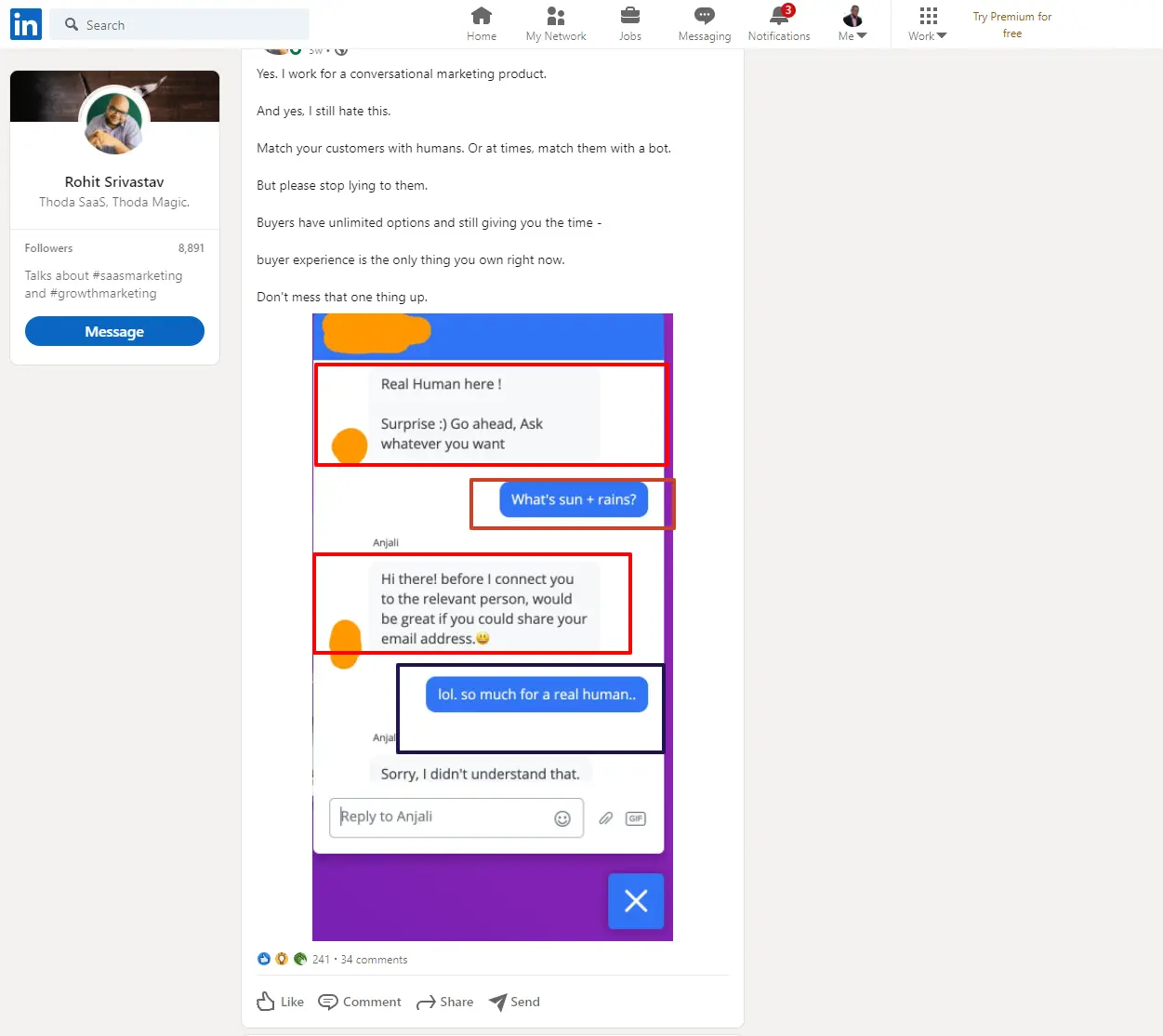 The best B2B SaaS companies match their customers with human customer representatives. At worst, with chatbots first, then humans later, as Ahrefs does. Here is how Ahrefs does it:
The best B2B SaaS companies match their customers with human customer representatives. At worst, with chatbots first, then humans later, as Ahrefs does. Here is how Ahrefs does it:
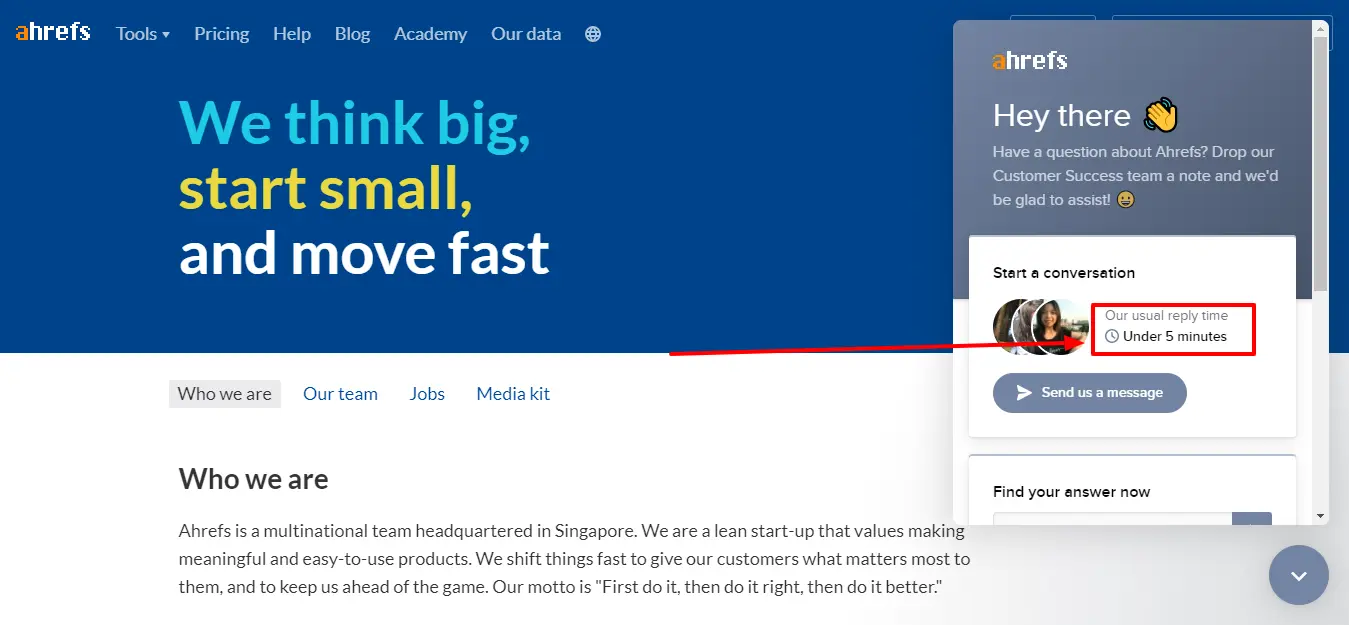 You get a notification that you’ll get a reply in under five minutes, as indicated by the image above.
And immediately after you send any message you’ll get a reply from a bot, as seen from the image below:
You get a notification that you’ll get a reply in under five minutes, as indicated by the image above.
And immediately after you send any message you’ll get a reply from a bot, as seen from the image below:
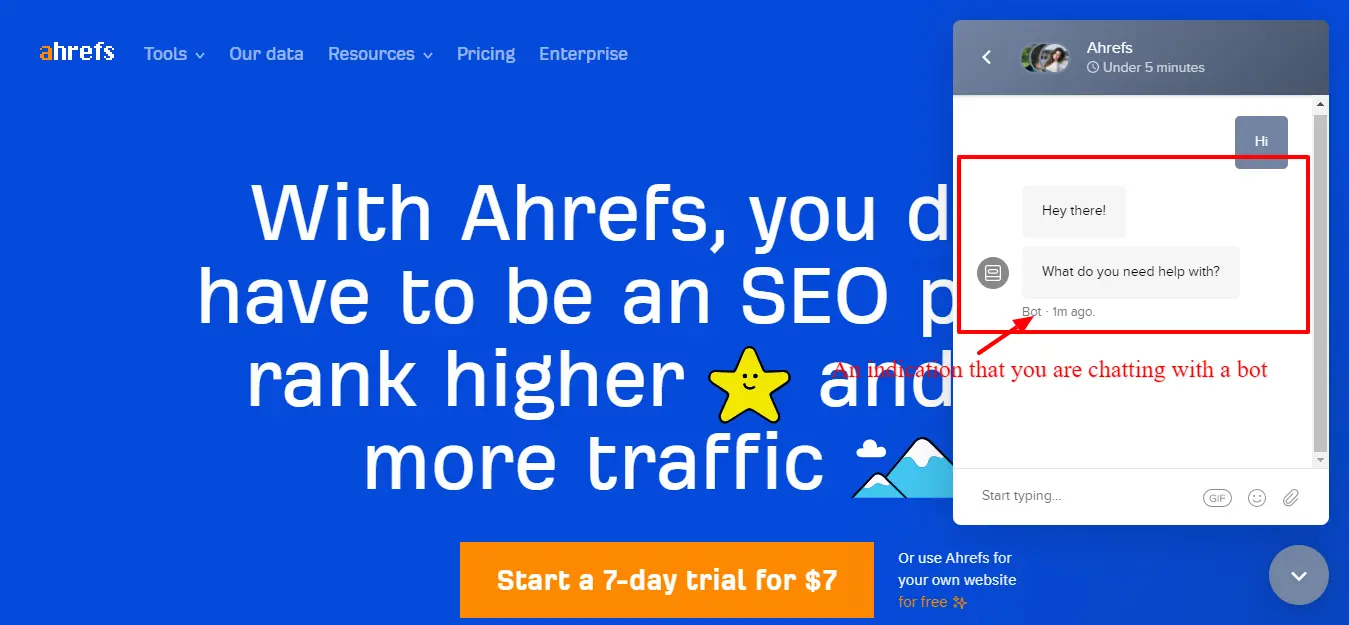 The next thing that will happen is one of their customer representatives will attend to your needs.
If your customers are going to be chatting with a bot, make it clear from the start. This way it won't dent their expectations should they want to continue.
With this forewarning, they understand what they are likely to get as a response. And in case they prefer humans, they might like to try another means of reaching out.
Don't get this wrong; chatbots aren't bad per se. But companies that transition from chatbots to human-to-human customer service often record low churn rates.
Research shows that 7.5 out of every 10 customers preferred it. And 2.5 would prefer self-service and chatbot.
Gravy, a company that helps subscription-based businesses accelerate revenue, is an excellent example of companies that value human-to-human live support. It is part of the message you get in their pop-out messages.
The next thing that will happen is one of their customer representatives will attend to your needs.
If your customers are going to be chatting with a bot, make it clear from the start. This way it won't dent their expectations should they want to continue.
With this forewarning, they understand what they are likely to get as a response. And in case they prefer humans, they might like to try another means of reaching out.
Don't get this wrong; chatbots aren't bad per se. But companies that transition from chatbots to human-to-human customer service often record low churn rates.
Research shows that 7.5 out of every 10 customers preferred it. And 2.5 would prefer self-service and chatbot.
Gravy, a company that helps subscription-based businesses accelerate revenue, is an excellent example of companies that value human-to-human live support. It is part of the message you get in their pop-out messages.
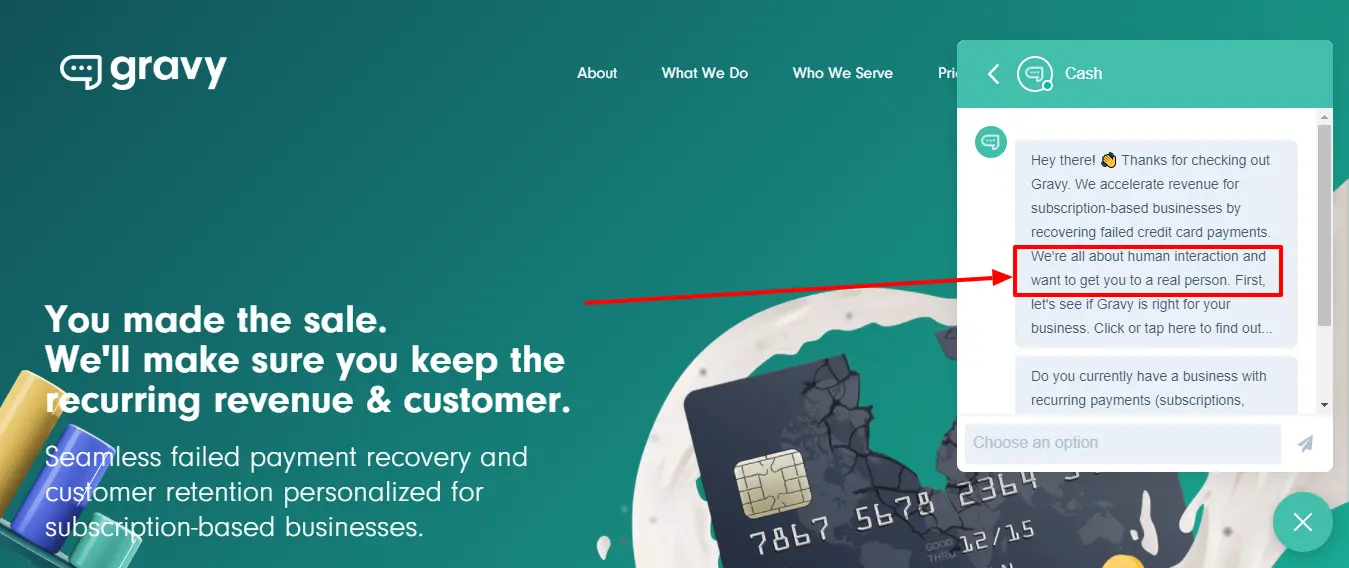 Nothing beats live customer support for customers in any business.
Nothing beats live customer support for customers in any business.
5. Provide Personalized Services (Automation) to Each Customer
Whether you have a big or lean team, you can never go wrong with personalized services or automation. Did you know that:- Research shows that 8 out of 10 people would convert for an offer based on what brands know about them already. (Epsilon)
- 72% of consumers are more likely to interact with brands if their marketing messages are personalized. (SmarterHQ)
- 51% of consumers feel businesses should anticipate their needs even before interacting with the company. (Salesforce)
- 84% of consumers said for any brand to win the bulk of their wallet share, they need to feel treated like a person (Salesforce).
- 62.26% say they feel "happy" and "excited" to reply to personalized messages from brands. (Dynamic Yield Research)
- Data from shows that 72% of consumers say they only want to engage with personalized messaging. (SmarterHQ)
- 63% of respondents said they find it annoying to receive repeated generic ads from companies. (Marketo)
How Does This Work for Companies with Lean Resources?
We can understand that for teams with small capacity, these strategies could be outrageous and out of reach. As such, we asked Amanda Natividad, the Marketing Architect for SparkToro, her thoughts: “Offering a personalized service is likely out of the question for lean teams that simply don't have the bandwidth. So I'd focus on creating personalized automation. You can segment users by job function or industry, or even by the actions they take on your site. Then send them messages — in-app messages or email — that help them maximize the utility of your product.” Amanda further strengthens her position on how they do it at SparKToro. "At SparkToro, it's really just me, Rand, and Casey. And while we do personally respond to every support email, we don't have the bandwidth to do true 1:1 personalized service." So, customer personalization/automation is an effective way to grow your brand and win at retention regardless of your team's bandwidth. Amanda shed more light on how, even despite being a lean team, they go out of their way to offer personalized service to every customer that reaches out to them. "I think there's a way for product/marketing teams to offer some level of personalization at scale. For instance, at SparkToro we really do take time to respond 1:1 to each email. Sometimes, I'll even record Loom videos to combine a product demo with overall advice. But this isn't a service we'd actually advertise. More like... it's just how we treat people when they reach out directly to us." There is no denying that we all have something to learn from Amanda and her team regardless of your company's strength.6. Send Out Email Campaigns or Newsletters That Promote New Features, Products, Promotions, or Updates to Keep Customers Engaged
One of the major known differences between B2B and B2C is the time it takes to close sales. B2C can close sales in seconds, while B2B could take weeks, months, and sometimes even years. This time difference is why SaaS B2B needs to engage its audience and continue doing so even after closing sales. Keep the company's website updated regularly with new content, testimonials, and other information. There are several ways to do this effectively; you could use case studies, blog posts, email marketing newsletters, or even YouTube channels. "The easier you make it for users to find the information, the better. This could be in behavior-based automated email flows, custom in-app messages, updating your blog, updating your Help Center — and weaving all these things together. For instance, a blog post could speak to a high-level pain point your customer might experience. And it links to a how-to regarding your product in the Help Center (if it's relevant, of course)." - Amanda Natividad of SparkToro. Again, you can see that making things easier for your customer is a no-brainer. According to the Content Marketing Institute's B2B research, 95% of B2B marketers use social media, 89% blog posts, and 81% email newsletters. These are also said to be the top three marketing channels for B2B. Here is how Surfer SEO does it: I once subscribed to their free trial, which I stopped when it expired. Since I was still on their email list, however, when they made an update I also got mailed. Now I am more likely to convert because of their recent update.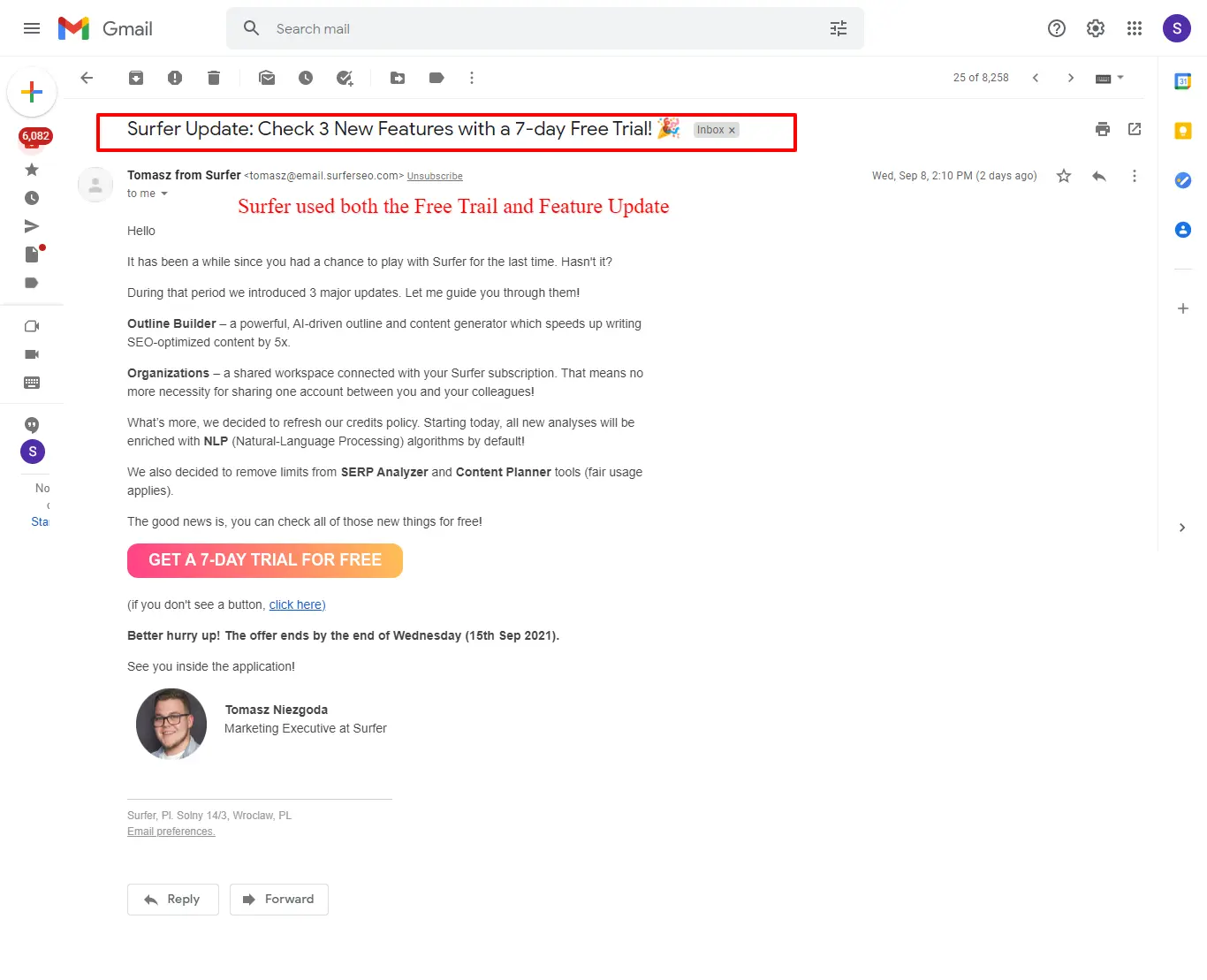 The key is this: Don't fail to engage and update your audience all the time.
But how do you do this, you ask:
The key is this: Don't fail to engage and update your audience all the time.
But how do you do this, you ask:
- Develop a practical framework to educate them. Here is how Victor Edouh uses Product Led-storytelling to help SaaS companies craft compelling content.
- You need to educate and inform your audience regularly constantly. Here is an excellent way to use storytelling to entertain, educate, and inform them.
- Write content that helps speak to their pain points and shows how your product/service will ease them.
- It should carve a niche for your company.
- It should educate your customer on how to use your product or service.



